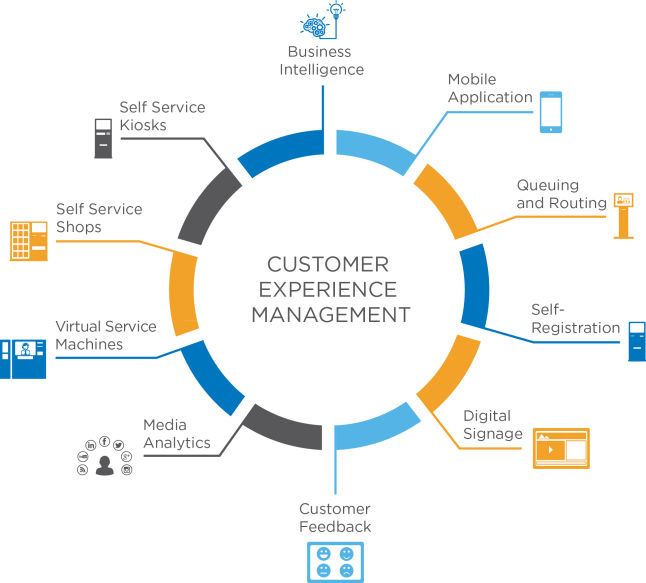In today’s competitive business landscape, providing exceptional customer experiences has become more crucial than ever. Customer experience management (CEM) is the strategic approach that businesses adopt to ensure every interaction a customer has with their brand is positive, memorable, and aligned with their needs and expectations. In this article, we’ll delve into the importance of customer experience management and explore effective strategies to enhance it.
Understanding Customer Experience Management

1. What is Customer Experience Management?
Customer Experience Management (CEM) refers to the strategic process of designing, monitoring, and optimizing the interactions customers have with a brand throughout their entire journey. It encompasses every touchpoint, from the first interaction to post-purchase support.
2. Why is CEM Essential for Businesses?
CEM goes beyond simply satisfying customers; it aims to create emotional connections and lasting impressions. By delivering exceptional experiences, businesses can foster customer loyalty, increase customer retention, and differentiate themselves in a competitive market.
Key Elements of Effective Customer Experience Management
1. Mapping Customer Journeys
Understanding the customer journey helps businesses identify pain points and opportunities for improvement. By mapping these journeys, businesses can align their processes and touchpoints with customer needs.
2. Personalization and Tailored Experiences
Personalization involves delivering relevant content and solutions based on customer preferences and behaviors. Tailored experiences make customers feel valued and understood.
3. Seamless Omni-channel Communication
Customers expect consistent experiences across all channels, whether online or offline. Omni-channel communication ensures a seamless transition between different touchpoints.
4. Employee Training and Engagement
Frontline employees play a critical role in delivering exceptional experiences. Investing in their training and engagement enhances their ability to empathize with customers and resolve issues effectively.
The Benefits of Prioritizing Customer Experience
1. Customer Loyalty and Retention
Satisfied customers are more likely to remain loyal and continue doing business with a brand. CEM builds trust and loyalty by consistently meeting customer expectations.
2. Positive Word-of-Mouth and Brand Advocacy
Customers who have positive experiences become brand advocates, spreading the word about their interactions. This word-of-mouth marketing can significantly impact a brand’s reputation.
3. Increased Customer Lifetime Value
Happy customers tend to spend more over their lifetime. By enhancing their experiences, businesses can increase their overall customer lifetime value.
4. Competitive Advantage
In a crowded market, exceptional customer experiences set businesses apart. A reputation for great service can attract new customers and retain existing ones.
Strategies for Successful Customer Experience Management
1. Data-Driven Insights and Analytics
Data analysis helps businesses understand customer behaviors and preferences. These insights guide strategic decisions to improve experiences.
2. Proactive Issue Resolution
Anticipating and addressing customer issues before they escalate demonstrates a commitment to customer satisfaction and helps prevent negative reviews.
3. Continuous Feedback Loop
Creating channels for customers to provide feedback allows businesses to refine their processes based on real-time input.
4. Innovation and Adaptability
CEM requires staying ahead of trends and adopting new technologies to meet changing customer expectations.
Implementing a Customer-Centric Culture
1. Leadership and Alignment
CEM initiatives need buy-in from top leadership to ensure that a customer-centric mindset permeates the organization.
2. Empowerment of Frontline Employees
Giving employees the autonomy to make decisions empowers them to solve customer issues creatively and effectively.
3. Rewards and Recognition
Recognizing and rewarding employees who consistently deliver outstanding customer experiences reinforces a culture of excellence.
4. Measurement and Improvement
Tracking key performance indicators related to customer satisfaction helps measure the effectiveness of CEM strategies and identify areas for improvement.
Overcoming Challenges
1. Managing Customer Expectations
Setting realistic expectations and managing them throughout the customer journey prevents disappointment and dissatisfaction.
2. Consistency Across Channels
Ensuring a consistent experience across various channels and touchpoints maintains brand integrity and customer trust.
3. Scaling Personalization
As a business grows, maintaining personalized experiences becomes more challenging. Automation and smart data usage can help scale personalization efforts.
4. Measuring ROI of CEM Initiatives
Quantifying the return on investment of CEM strategies can be complex, but it’s essential to demonstrate the value they bring to the business.
Conclusion
In today’s hyper-connected world, delivering exceptional customer experiences is the key to long-term business success. By prioritizing customer experience management, businesses can create loyal customers who not only continue to choose their brand but also advocate for it. Remember, a customer-centric approach is not a one-time effort; it’s an ongoing commitment to consistently exceeding customer expectations.
Ready to elevate your customer experiences? Request a demo of AIM Technologies’ advanced CEM solutions and discover how you can take your business to the next level.
FAQs
What is customer experience management?
- Customer experience management (CEM) involves strategically managing and optimizing customer interactions to create positive and memorable experiences.
Why is customer experience important for businesses?
- Exceptional customer experiences lead to increased customer loyalty, positive word-of-mouth, and a competitive edge in the market.
How can businesses measure the success of CEM strategies?
- Success in CEM can be measured through customer satisfaction surveys, Net Promoter Score (NPS), and customer retention rates.
What challenges do businesses face in implementing CEM?
- Challenges include scaling personalization, maintaining consistency across channels, and effectively measuring the ROI of CEM initiatives.
How can businesses create a customer-centric culture?
- A customer-centric culture requires leadership alignment, employee empowerment, and a continuous focus on measuring and improving customer experiences.




